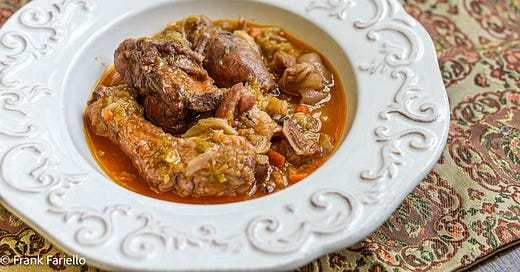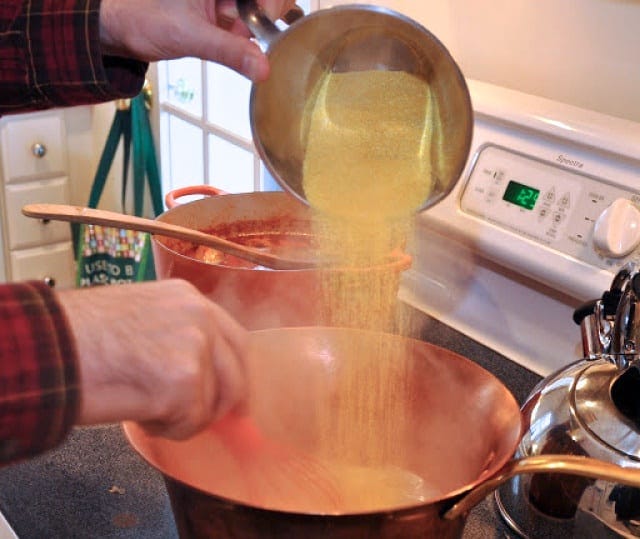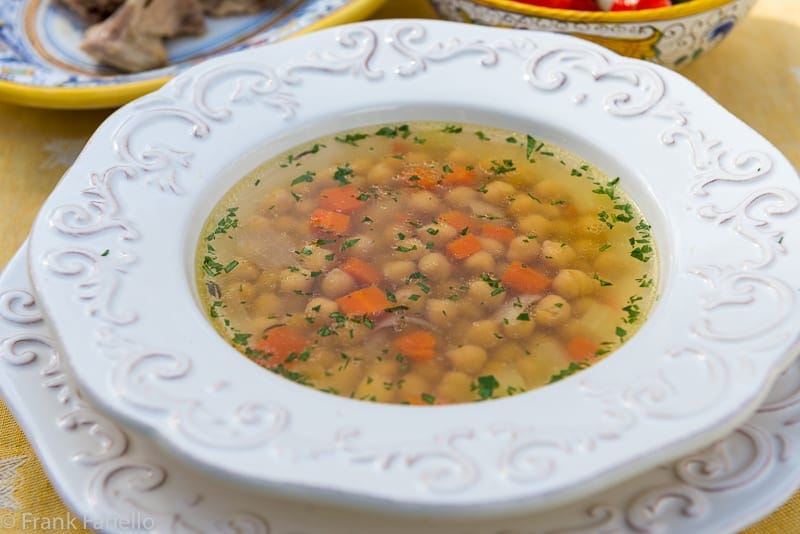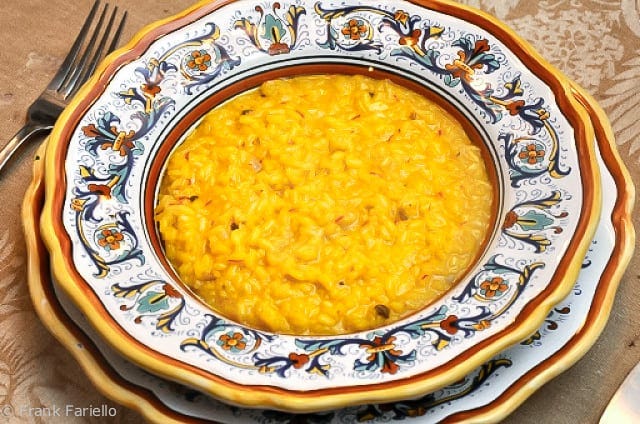Dear readers,
I'm just back from a short but very sweet visit to Rome. What a joy it was to catch up with family, old friends and ex colleagues, some of whom I hadn't seen in nearly 20 years. And to get reacquainted with beauties of the city and, of course, its marvelous food. There weren't too many true revelations on the culinary front, but I do have a few new recipes up my sleeve that I want to share with you in future posts.
Before that, however, I want to take the opportunity this week to share with you a recipe from that other capital of Italy—the economic and financial one—Milan, that I've had on my "to do" list for quite some time: Cassoeula, the iconic pork and cabbage stew, as much a symbol of the city in its own rustic way as risotto alla milanese or a cotoletta.
It’s timely to share this recipes with you this week because cassoeula belongs to the same category of pork dishes as minestra del morti or the Soup of the Dead, traditionally prepared during the pig-slaughering season in the late autumn and early winter. Back in the days before refrigeration, common folk would prepare these dishes to quickly use up the most perishable parts of the pig.
Served throughout the season, cassoeula typically appears as a hearty Sunday dinner. But it has particular associations with two Catholic feasts, the feast of Saint Martin on November 11, which marks the beginning of the season, and the feast day of Saint Anthony the Abbot on January 17, which ends it.
Cassoeula actually includes a mix of 'normal' cuts like the ribs and sausages, plus those perishable odds and ends of the pig like the rind, trotter, tail, ear and snout. You braise them all with aromatic vegetables and Savoy cabbage, and sometimes a bit of tomato for color, until everything is falling apart tender. Quite literally snout to tail eating.
Now if you're squeamish about eating the specialty parts of the pig, no worries. You can make a 'lite' version of cassoeula using just the ribs and sausage. It won't have quite the same taste and texture as a true cassoeula, but it will be delicious all the same.
Cassouela is usually served with freshly made steaming polenta, making for a real stick to the ribs cold weather one dish meal. All you need to round things off is a piece of fruit and perhaps a chunk of cheese.
You might also like…
How to Make Homemade Polenta
Homemade polenta is a staple in the northern Italy from the Veneto to Lombardia to Piemonte. It is also one of the oldest foods eaten in the country, dating back at least to 990 BCE.
As befits la cucina povera, polenta is simple to make but requires patience and care. Polenta was traditionally made by the fire, cooked in a copper pot known as a paiolo, hung close to the fireplace and stirred with a wooden stick known as a tarai (or tarel in some areas). Polenta today is usually made on top of a stove, and some modern methods have been developed to save time and effort.
Minestra dei morti (Soup of the Dead)
Modern Milan, political capital of Lombardy and financial capital of Italy, conjures up images of sharply dressed business people, trendy fashion shows and elegant shops. Lombardy is one of the riches areas of Italy and, indeed, the world. So it may come as a surprise that the region’s traditional cuisine is actually fairly rustic, with many humble cucina povera dishes dating back to its less prosperous past. Many dishes revolve around staples like rice and polenta. Another case in point: minestra dei morti, or Soup of the Dead, a hearty, simple soup made with pork and chickpeas, traditionally prepared for November 2, the Day of the Dead or All Souls Day.
Risotto alla milanese (Milanese-Style Risotto)
Risotto is one of the staples of northern Italian cooking, nowhere more so than in Lombardy. Risotto alla milanese is the dish that perhaps best typifies the cooking of Milan, the capital of Lombardy region and the economic and financial capital of Italy.
This risotto follows the classic method for making risotto, but it has two defining ingredients that give it its special flavor and character. As many of you will already know, it is flavored with saffron—which gives it a beautiful gold color—but perhaps fewer people know that in a true risotto alla milanese, the soffritto must include beef marrow. The marrow lends a beefy background flavor to the dish, as well as a subtle richness and unctuousness. The ingredient is so characteristic of the dish that I have seen this risotto listed on menus in Milan as risotto al midollo, the word ‘midollo‘ being Italian for bone marrow.








I would make the cassouela with offal but not many, apart from me, would eat it. Their loss.
This looks so good. Bring on the offal!